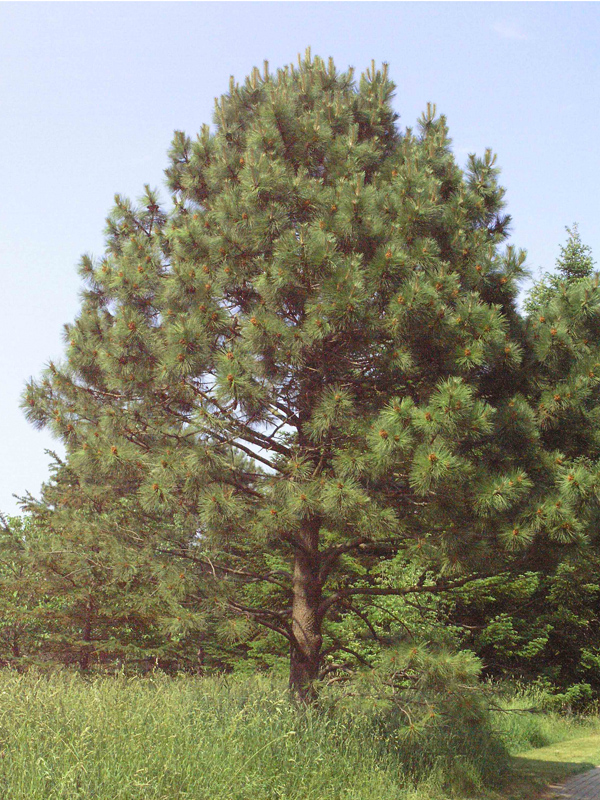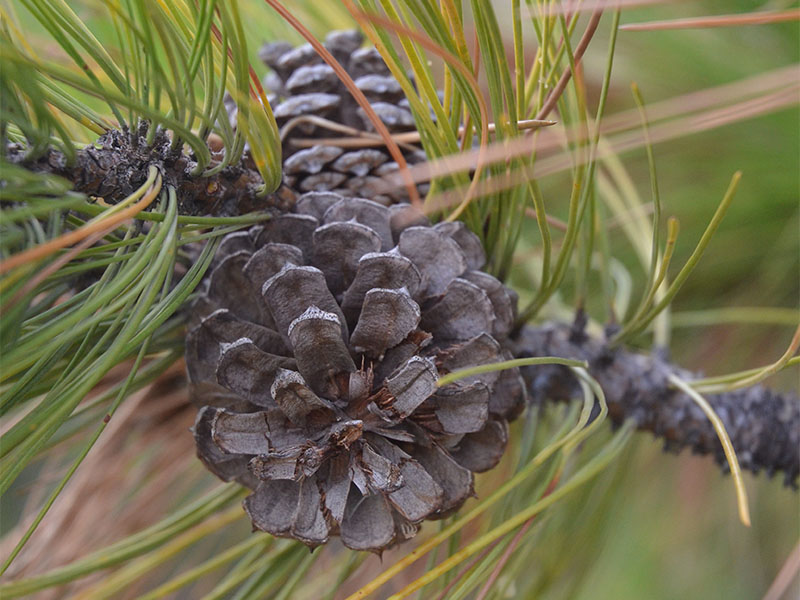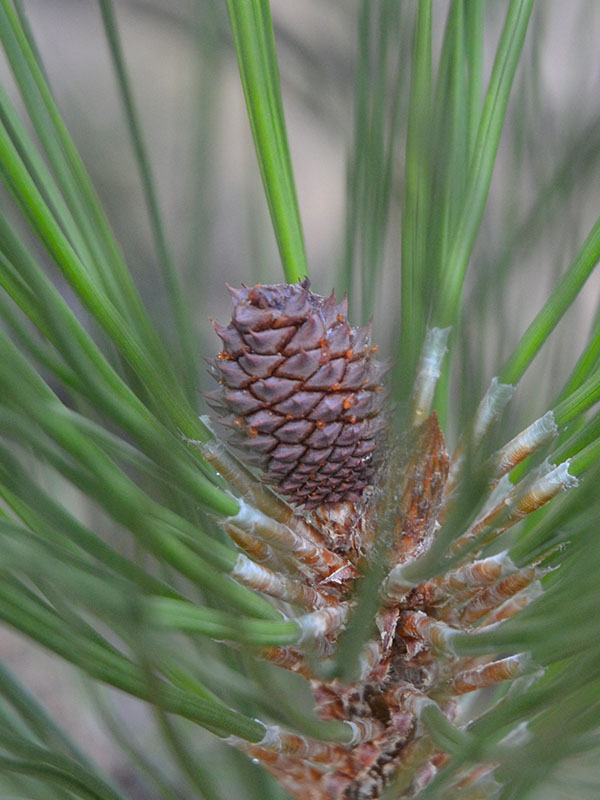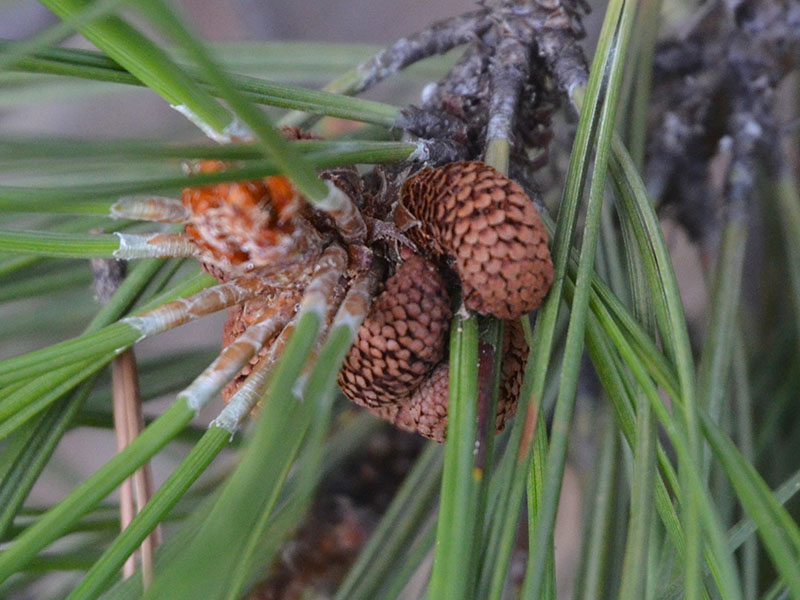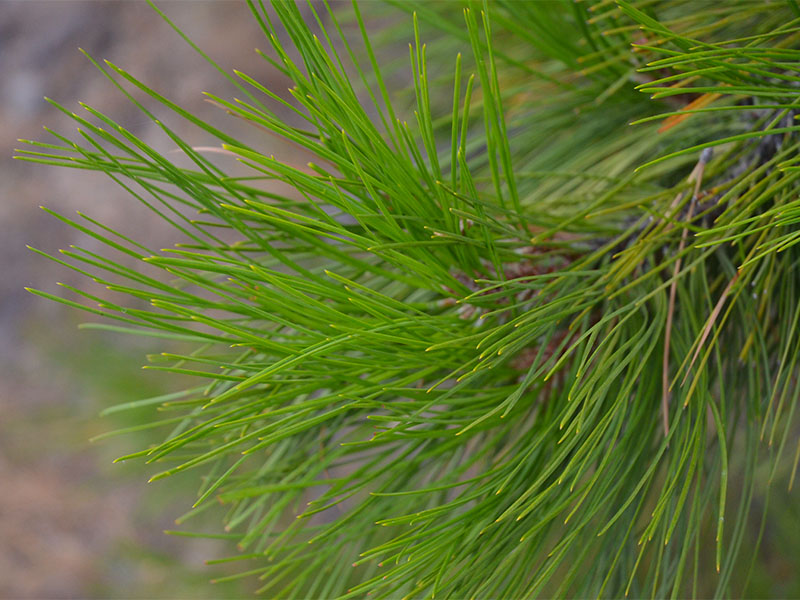| General Description | Irregular flat top mature tree; with long dark or yellow-green needles, with 2 needles per fascicle; yellow-brown to cinnamon red flat flakes on mature bark. |
| ID Characteristic | Cones have sharp points when squeezed in hand; long dark or yellowish green needles; has yellowish brown to cinnamon red flat flakes on mature bark. |
| Shape | Pyramidal when young; as it gets older an irregular flat top or short conical crown develops. |
| Landscape | Valuable forest tree because it is native, suited to mass-planting, erosion control, or shelter belts. |
| Propagation | Seeds have no dormancy and germinate immediately; has a short stratification of 6 weeks at 4° C that improves the germination of stored seeds. A greater survival rate occurs if seeds are planted into individual pots rather than in a field. |
| Cultivation | Young plants are intolerant of shade and excessive moisture; thrives in light well-drained sandy or gravelly loamy soil; can be grown as a field crop, or container grown. |
| Pests | Ponderosa pine budworm; tip blight; dieback; needle blight; cankers; stem blister rust; late damping-off and root rot. |
| Notable Specimens | The Gardens of Fanshawe College, London, Ontario, Canada. The A. M. Cuddy Gardens, Strathroy, Ontario, Canada.
British Columbia, Canada. |
| Habitat | Prefers mountain terrain, in mixed coniferous forests; grows in high and low elevations. |
| Bark/Stem Description | Brown-black, rough and scaly on young trees; yellow-brown to cinnamon red; very thick and deeply grooved into flat, flakes of bark in mature trees. |
| Flower/Leaf Bud Description | Red-brown; oblong; resinous scales closely appressed, 2 cm long. |
| Leaf Description | Dark or yellowish green; 2 needles per fascicle; 13 - 28 cm in length; slender, with sharp points and toothed edges. |
| Flower Description | Monoecious; male flowers yellow-red and cluster at the end of branch; female flowers are red and at the branch tips; 1 cm long. |
| Fruit Description | Cone; light red-brown; scales thicker towards the tip with a rigid prickle on the end; 10 - 15 cm in length. |
| Colour Description | Dark or yellow-green needles with no autumn colour; reddish brown cones; male flowers yellow red, female flowers red. Young bark brown-black, mature bark has yellow-brown to cinnamon red flat flakes; red-brown buds. |
| Texture Description | Coarse needles; rugged bark; an unusual overall textured tree. |
